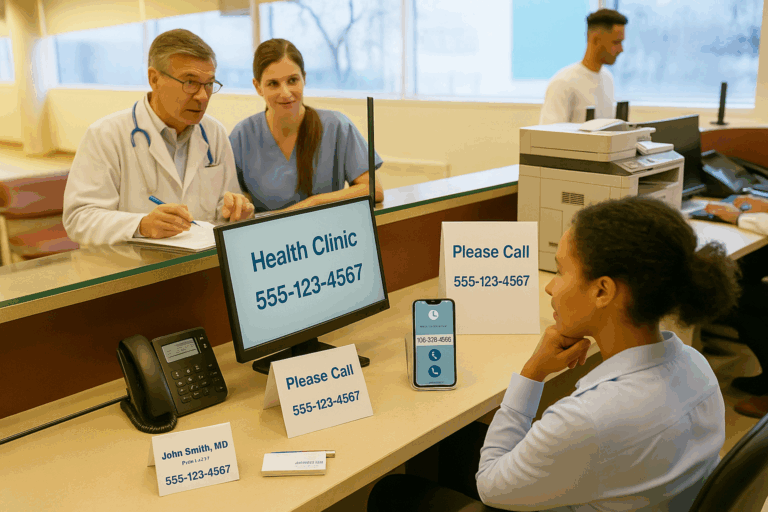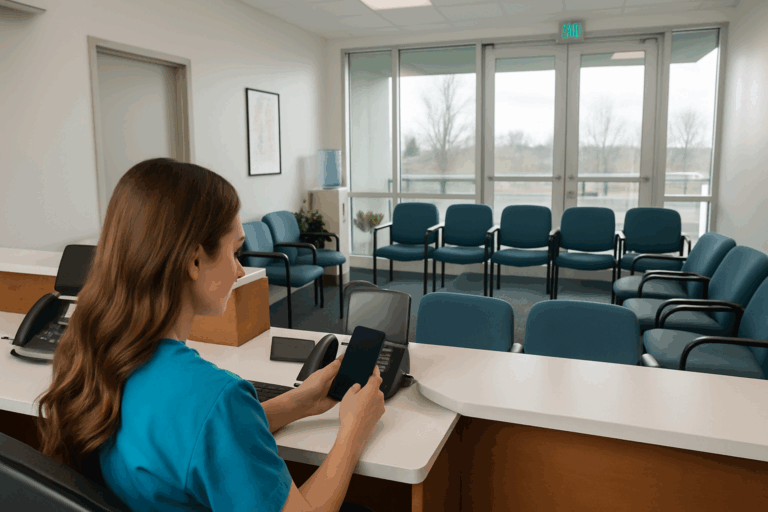The Role of Technology in Decreasing Clinician Burnout
Nearly four in 10 Americans say that worry and stress related to the threat of COVID-19 has played a negative role in their mental health. Rates of depression have tripled as a result of the COVID-19 pandemic.
For many doctors, the stress and worry about the pandemic have exacerbated an already prevalent issue: physician burnout. A majority of American physicians are experiencing some sign of burnout, a condition that affects all specialties and all practice settings.
The 2021 Survey of America’s Physicians, COVID-19 Impact Edition: A Year Later found that the added stress of the pandemic resulted in increased clinician burnout. Another survey reported that two in three respondents thought the general public’s resistance to taking basic COVID-19 precautions could be adding to clinician burnout.
Burnout is only one of the problems plaguing the healthcare industry. A shortage of physicians and nurses is already predicted for the next decade. Data from the Association of American Medical Colleges (AAMC) shows the United States could be short as many as 124,000 physicians by 2034 in both primary and specialty care, and the American Nurses Association (ANA) estimates that by as soon as 2022 there will be more registered nurse (RN) jobs available than any other profession.
According to a poll by the Kaiser Family Foundation, three in 10 healthcare workers have considered leaving the profession due to the pandemic. More than 20 percent of nurses have indicated that they may within the next year leave their current position providing direct patient care.
Causes and Symptoms of Physician Burnout
What causes physician burnout? Numerous things, from family responsibilities and work conditions (low control over work pace, unfavorable organizational culture, chaotic environments) to time pressures when conducting physician examinations. It also can be the result of EHR frustrations, administrative burdens, regulatory headaches, malpractice concerns and the rise of consumerism.
The three primary symptoms of physician burnout are:
- Exhaustion. The physician’s physical and emotional energy levels are extremely low and in a downward spiral.
- Depersonalization. This is signaled by cynicism, sarcasm, and the need to vent about your patients or your job. This is also known as “compassion fatigue.”
- Lack of efficacy. You begin to doubt the meaning and quality of your work and think, “What’s the use? My work doesn’t really serve a purpose anyway.” You may worry that you will make a mistake if things don’t get better soon.
Associated manifestations can include headache, insomnia, tension, anger, narrow-mindedness, impaired memory, decreased attention and thoughts of quitting.
Consequences of physician burnout range from medical errors and a lower quality of patient care to substance abuse and increased costs. The American Academy of Family Physicians (AAFP) notes that burnout is directly linked to lower patient satisfaction, higher malpractice risk and physician and staff turnover and physician suicide. More than half of physicians reported that they have known a physician in their career who considered, attempted or died by suicide.
Roughly $4.6 billion in costs related to physician turnover and reduced clinical hours is attributable to burnout each year in the United States. The annual economic cost associated with burnout related to turnover and reduced clinical hours is approximately $7600 per employed physician. Burned-out doctors are more likely to leave practice, which reduces patients’ access to and continuity of care.
The Importance of Well-designed Healthcare Technology
Employing technology solutions can aid in reducing clinician burnout, but it can also make it worse if it doesn’t meet the needs of physicians and their staff members. Poorly designed and deployed technology is a contributory factor in clinician burnout and a lack of professional well-being. Even the implementation of an EHR can contribute to burnout.
Although poorly-designed healthcare technology may introduce frustrating processes into the care delivery experience and make the experience more difficult and error-prone, identifying HIT-specific factors associated with burnout has the potential to guide healthcare organizations seeking to measure and remediate burnout among their physicians and staff.
Technology, when used properly, has the potential to improve patient care. Specifically, well-designed decision support technologies increase efficacy, reduce errors, improve quality of care and increase clinician, staff and patient satisfaction. Attributes that apply to effective, efficient and usable healthcare technology include:
- Easy retrieval of accurate, timely and reliable native and imported data
- Simple and intuitive data presentation
- Easy navigation
- Availability of evidence at the point of care to aid decision-making
- Capability to enhances workflow, automate mundane tasks and streamline work without increasing physical or cognitive workload
- Easy transfer of information to and from other organizations and clinicians
- No unanticipated downtime
Learn how RingRx can help you simplify your workflow, allowing you to work smarter, not harder. We serve solo and group physician practices, hospitals and health systems of all sizes, and our HIPAA-compliant healthcare communication phone systems and on-call services can be customized to meet your specific business and patient care goals.



